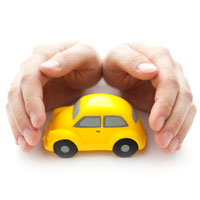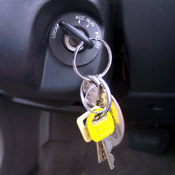7 Money Saving Ideas Proven to Slash the Cost of Car Insurance Costs in Philadelphia

Having to pay for overpriced car insurance can drain your savings account and put a big crunch on your finances. Comparison shopping is free, only takes a few minutes, and is a good way to lower your monthly bill. Drivers have so many insurers to buy insurance from, and although it’s a good thing to have a choice, it can be more difficult to adequately compare rates.
It’s a great practice to check car insurance prices before your policy renews because prices change regularly. Despite the fact that you may have had the lowest rates a few years ago a different company probably has better rates today. There is a lot of bad information regarding car insurance online but by reading this article, you’re going to learn some of the best ways to buy car insurance cheaper.
Comprehensive Philadelphia Car Insurance Comparison
Most major insurance companies give coverage price quotes on their websites. This process is fairly straightforward as you simply enter your personal and coverage information as detailed in the form. After you submit the form their system pulls reports for credit and driving violations and quotes a price determined by many factors. Being able to quote online makes it a lot easier to compare rates but the time required to go to several different sites and complete many quote forms is repetitive and time-consuming. But it’s very important to get many rate quotes if you want to find a lower rate.
The preferred way to compare rates uses one simple form that obtains quotes from multiple companies. It saves time, helps eliminate reptitive entry, and makes online quotes much easier. After sending the form, it is quoted and you can select any or none of the price quotes you receive. If you find a better price you can click and sign and purchase coverage. The entire process can be completed in less than 10 minutes and you will find out if you’re overpaying now.
In order to get comparison pricing now, click here to open in new window and submit the form. To compare your current rates, we recommend you input the coverage information exactly as they are listed on your policy. This helps ensure you will have rate comparison quotes using the same coverage and limits.
Discounts are basically free money
Car insurance companies don’t list every available discount very clearly, so here is a list both the well known as well as the least known ways to save on car insurance. If you’re not getting every credit you deserve, you’re paying more than you need to.
- Federal Employees – Employees or retirees of the government may qualify you for a discount with select insurance companies.
- Multi-car Discount – Buying insurance for more than one vehicle with the same company may reduce the rate for each vehicle.
- Driver Safety – Successfully completing a defensive driving course could cut 5% off your bill and easily recoup the cost of the course.
- Good Students Pay Less – A discount for being a good student can get you a discount of up to 25%. The discount lasts until age 25.
- Sign Early and Save – A few companies offer discounts for switching policies prior to your current policy expiring. It can save you around 10%.
- Theft Prevention System – Cars that have factory anti-theft systems help deter theft and qualify for as much as a 10% discount.
- Air Bag Discount – Vehicles with factory air bags or automatic seat belts can receive discounts of up to 25% or more.
Keep in mind that most discount credits are not given to all coverage premiums. A few only apply to specific coverage prices like liability and collision coverage. So despite the fact that it appears adding up those discounts means a free policy, you’re out of luck.
What car insurance coverages do you need?
Knowing the specifics of a car insurance policy can be of help when determining the best coverages and the correct deductibles and limits. Car insurance terms can be impossible to understand and nobody wants to actually read their policy. Listed below are typical coverages found on most car insurance policies.
Collision – This coverage covers damage to your vehicle resulting from colliding with an object or car. You have to pay a deductible then the remaining damage will be paid by your insurance company.
Collision insurance covers things like sideswiping another vehicle, damaging your car on a curb and colliding with a tree. Collision is rather expensive coverage, so analyze the benefit of dropping coverage from vehicles that are 8 years or older. You can also raise the deductible in order to get cheaper collision rates.
Coverage for uninsured or underinsured drivers – Your UM/UIM coverage protects you and your vehicle’s occupants when other motorists are uninsured or don’t have enough coverage. It can pay for medical payments for you and your occupants and damage to your vehicle.
Since many Pennsylvania drivers only carry the minimum required liability limits (15/30/5), their liability coverage can quickly be exhausted. So UM/UIM coverage is very important.
Coverage for liability – Liability coverage provides protection from damage or injury you incur to a person or their property. This insurance protects YOU from claims by other people. Liability doesn’t cover your injuries or vehicle damage.
Liability coverage has three limits: bodily injury for each person, bodily injury for the entire accident, and a limit for property damage. Your policy might show policy limits of 100/300/100 which means a limit of $100,000 per injured person, a limit of $300,000 in injury protection per accident, and a limit of $100,000 paid for damaged property.
Liability insurance covers claims like repair bills for other people’s vehicles, pain and suffering, court costs, structural damage and emergency aid. How much coverage you buy is your choice, but you should buy as large an amount as possible. Pennsylvania requires drivers to carry at least 15,000/30,000/5,000 but you should think about purchasing more liability than the minimum.
Coverage for medical expenses – Med pay and PIP coverage pay for bills such as pain medications, rehabilitation expenses, EMT expenses and ambulance fees. The coverages can be utilized in addition to your health insurance plan or if you lack health insurance entirely. It covers all vehicle occupants and also covers if you are hit as a while walking down the street. Personal Injury Protection is only offered in select states but can be used in place of medical payments coverage
Comprehensive car insurance – This covers damage OTHER than collision with another vehicle or object. You first must pay your deductible and then insurance will cover the rest of the damage.
Comprehensive coverage pays for things like falling objects, hitting a bird, hail damage and a tree branch falling on your vehicle. The maximum amount you can receive from a comprehensive claim is the actual cash value, so if it’s not worth much more than your deductible consider dropping full coverage.
More comparisons equals lower rates
When buying insurance coverage, it’s a bad idea to reduce needed coverages to save money. In too many instances, someone dropped liability limits or collision coverage and learned later that the small savings ended up costing them much more. Your goal should be to buy the best coverage you can find at a price you can afford, not the least amount of coverage.
Cheaper car insurance can be bought online in addition to many Philadelphia insurance agents, and you should compare price quotes from both to have the best selection. A few companies do not provide online price quotes and usually these small insurance companies provide coverage only through local independent agents.
To learn more about car insurance in Pennsylvania
More tips and info about car insurance is located at the Pennsylvania Insurance Department website. Consumers can find out which companies have the most complaints, learn about insurance regulations, read consumer alerts, and file complaints about an insurance agent or broker.
These articles may also be worth reading.

